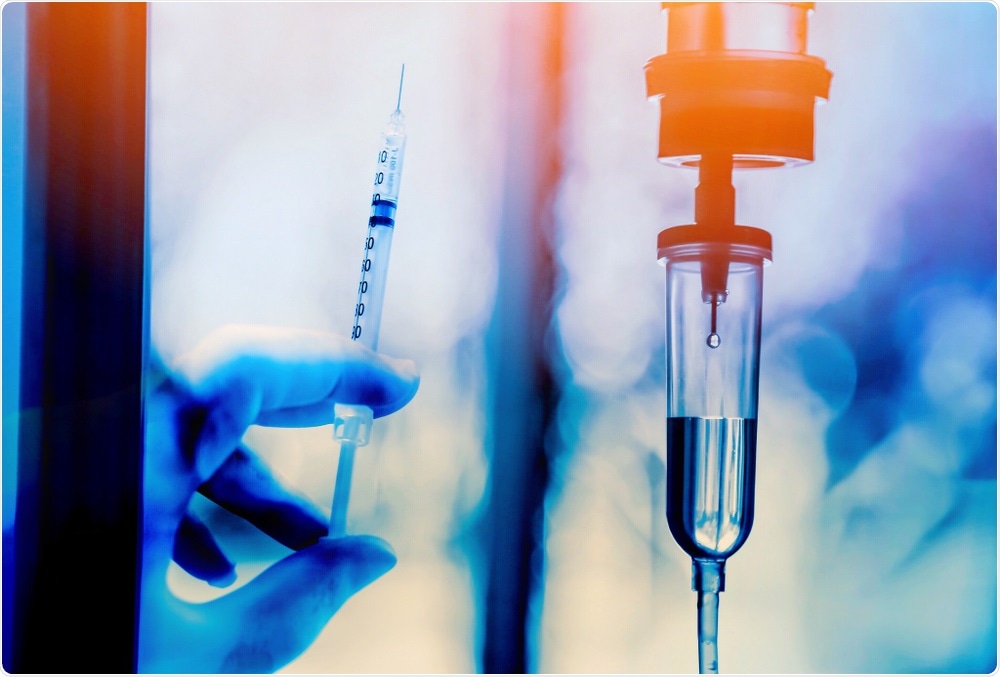Chemotherapy not only attacks cancer cells but also targets all cells in the human body. This is the reason why patients receiving this treatment generally experience adverse side effects, like hair loss, physical weakness, and nausea.

Image Credit: Numstocker/Shutterstock.com
But since tumor cells divide and proliferate faster than a majority the normal cells, they are more susceptible to chemotherapy, which destroys cells by suppressing their ability to proliferate.
Most often, chemotherapy attacks and destroys DNA, preventing tumor cells to replicate their genome—which involves copying the genetic data—and stopping their growth, thereby causing them to die.
But cancer cells may identify ways to evade chemotherapy. When targeted by chemotherapy, cells—such as cancer cells—will attempt to bypass or repair the damage.
A research team, from the Faculty of Health and Medical Sciences at the University of Copenhagen, is trying to find out how cells bypass or repair the chemotherapy-induced lesions, in the hope to discover new techniques to block these repair processes and render the chemotherapy much more efficient.
In a recent collaborative study with different labs at the Center for Protein Research, Associate Professor Julien Duxin and his team have demonstrated a protein that appears to play a crucial role in recruiting key repair and signaling factors of DNA. If the team is right, the finding could be significant for upcoming chemotherapy treatments.
We have found strong evidence that the protein RFWD3 is responsible for orchestrating the repair of different DNA lesions induced by chemotherapy. If we can inhibit this protein, we could potentially block cells from tolerating DNA lesions, which could lead to more effective chemotherapy in the future.”
Julien Duxin, Group Leader and Associate Professor, Novo Nordisk Foundation Center for Protein Research, University of Copenhagen
Uncovering the knowledge gap
Published in the Molecular Cell journal, the findings are the result of three years of research performed by the Duxin Group. The researchers work on interpreting the underlying principles of DNA repair and DNA replication, which enable cells to repair genomic lesions, similar to the one caused by chemotherapy, Duxin added.
Since the 1950s and the pioneer work from Sydney Farber, we have been treating cancer patients with different types of chemotherapeutic agents. These are extremely toxic agents, which have been approved in the clinic because they are effective at killing cancer cells.”
Julien Duxin, Group Leader and Associate Professor, Novo Nordisk Foundation Center for Protein Research, University of Copenhagen
Duxin continued, “But the truth is that we still don't know how cells can repair the damage caused by the treatment. It is a huge knowledge gap, which we are trying to fill in with our fundamental research.”
The researchers used egg extracts from African frogs containing the same repair factors like the ones present in human cells, and effectively identified the RFWD3 protein as a crucial coordinator for the repair events that occur when cells replicating across the DNA lesions.
The researchers noticed that the lack of protein has a profound defect in the recruitment of the components required to repair and withstand the damage.
Repairing DNA lesions is a complex sequence of multiple events. Our goal is to identify the proteins at each event, which are essential to do this type of repair.”
Julien Duxin, Group Leader and Associate Professor, Novo Nordisk Foundation Center for Protein Research, University of Copenhagen
Duxin explained that not much is known about the workings of the repair mechanism across different types of DNA damage. Now, the team is attempting to install simple systems that would allow them to molecularly explore the way these damages are fixed.
“We have very little knowledge about how most of these lesions caused by chemotherapy are repaired inside our cells. We are setting up different model systems to study this in detail and identify the key enzymes essential to this process. And by knowing those key enzymes we also get key targets that companies can aim to inhibit,” Duxin concluded.
Source:
Journal reference:
Gallina, I., et al. (2020) The ubiquitin ligase RFWD3 is required for translesion DNA synthesis. Molecular Cell. doi.org/10.1016/j.molcel.2020.11.029.